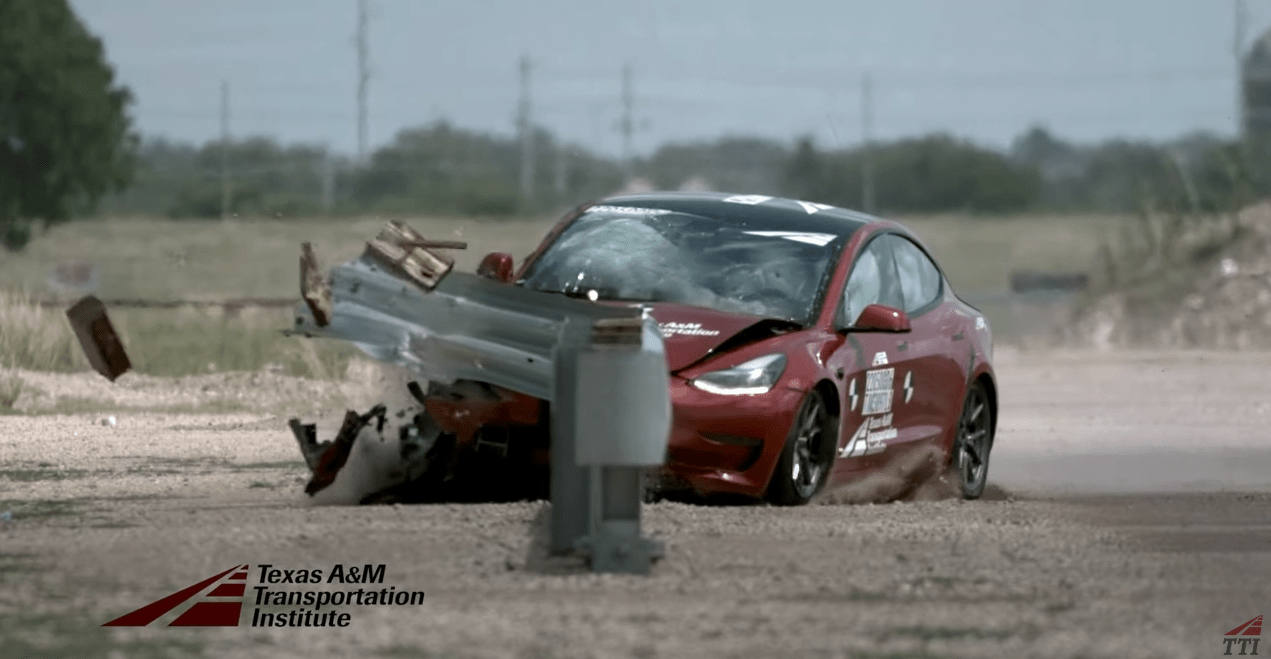TEXAS (KXAN) — An electric vehicle crash test conducted by the Texas A&M Transportation Institute (TTI) last week highlighted the need for enhanced roadway safety infrastructure.
TTI said in a release the June 18 experiment was the first-of-its-kind-crash test to be done in Texas, using a Tesla Model 3 vehicle as the central subject of the test. In the experiment, the nearly 4,000-pound electric vehicle hit a thrie beam guardrail system at a 25-degree angle while traveling 62 miles per hour, matching typical conditions used in the “Manual for Assessing Safety Hardware” crash test system.
The barrier didn’t contain the vehicle, the test found; instead, the car slammed through the barrier and didn’t meet current crash testing evaluation standards. The test results suggested new guardrail redesigns are needed to best respond to EVs in the event of a crash.
“Our vehicle fleet is ever-changing, and as the industry continues the process of ensuring guardrails are meeting our safety needs, it’s crucial to consider which vehicles we should be testing,” said Lance Bullard, TTI’s senior research engineer and associate agency director over the safety group, in a release. “This crash test is another step in that ongoing process.”
Amid TTI’s experiment, the Texas Department of Transportation — which had representatives on site during the crash test — is poised to kick off a pool fund study alongside other states to “investigate the effects of EVs on roadside infrastructure,” per the release. TTI will be the research agency behind the study, noting it’s particularly relevant in Texas as the Lone Star State is home to roughly 210,000 registered EVs.
Outside of Texas, California and Florida are other U.S. states with a high concentration of EV registrations. TTI officials said the institute’s crash test is reflective of upgraded guardrail system necessities as well as the need for roadway safety improvements.
“Guardrails have been tested extensively with traditional internal combustion engine vehicles, but we don’t yet know how they respond to EVs, which have a lower center of gravity and are generally heavier,” said Roger Bligh, senior research engineer and manager behind TTI’s roadside safety program, in the release. “The results of the crash test do not indicate a call to panic but rather a call for more research.”
